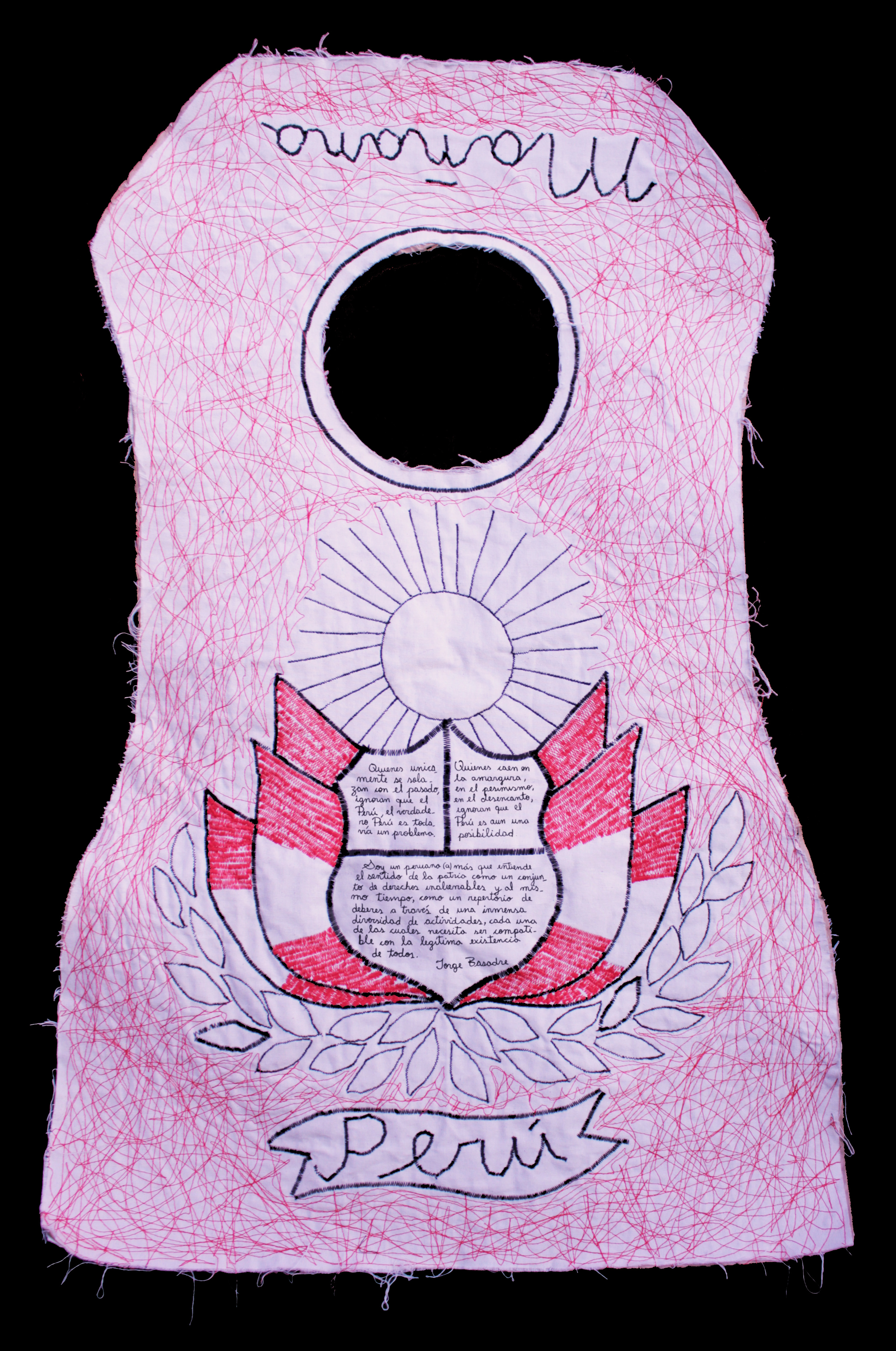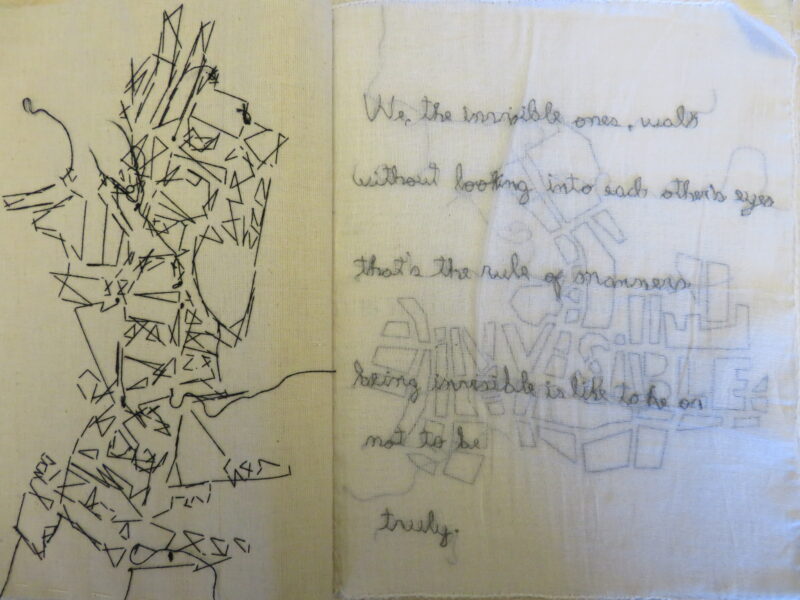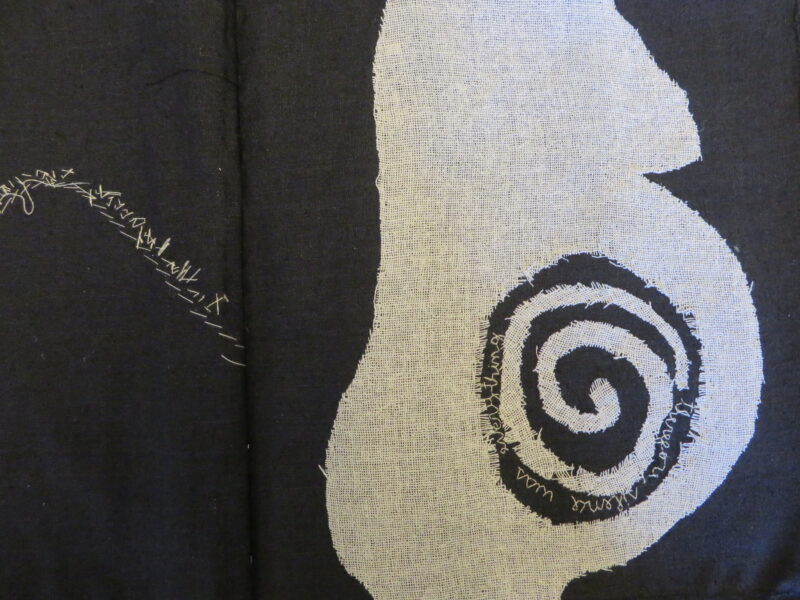Nereida Apaza Mamani

Art piece by Nereida Apaza inspired by Negreria dance bibs. ©SDCELAR
Apaza has embroidered the outline of the Peruvian coat of arms onto the front of the bib, but it is empty of the symbols traditionally inserted into each central compartment. In their place, she has embroidered a fragment of the artwork Peru: problem and possibility by the Peruvian historian Jorge Basadre. Her work critiques political inertia in contemporary Peru. The tangled red lines surrounding the emblem mimic the colour of the national flag, but they also represent injustice and violence. The back of the bib reads mañana (tomorrow) and is a homage to the Peruvian art activist Juan Javier Salazar, whose project “Peru: pais del mañana” criticised the nation’s hopes for a future reform that is always in process, but never takes place.

London A-Z, Nereida Apaza Mamani (2019) © Trustees of the British Museum
Apaza’s “London A – Z” engages with the BM collection through its materiality and in the way that it manipulates the spectator’s experience. It also evokes her own emotions and point of view about the museum and the city. Apaza’s response to her residency with SDCELAR is not only intellectual and political, it is uncomfortable, raw, and questioning of the “Western” world.

Genesis, Nereida Apaza Mamani (2019) © Trustees of the British Museum
This is a personal and intimate work in which Apaza illustrates her personal experience in the city of London and, more specifically, in the storage spaces at the British Museum. These spaces, with their protocols, customs, languages and memories, are represented through the text of the poem, which sometimes seems incompatible with her lived experience in Peru which is represented by the silhouettes.